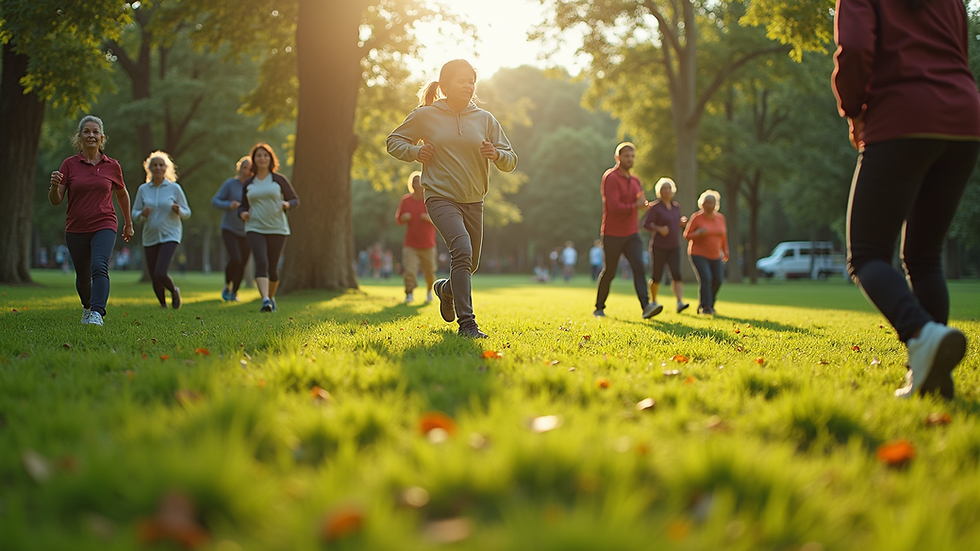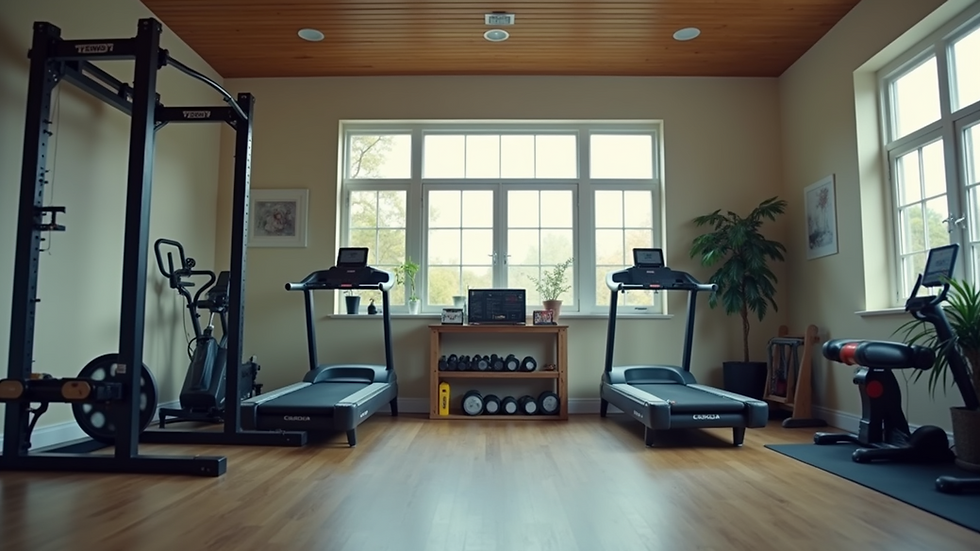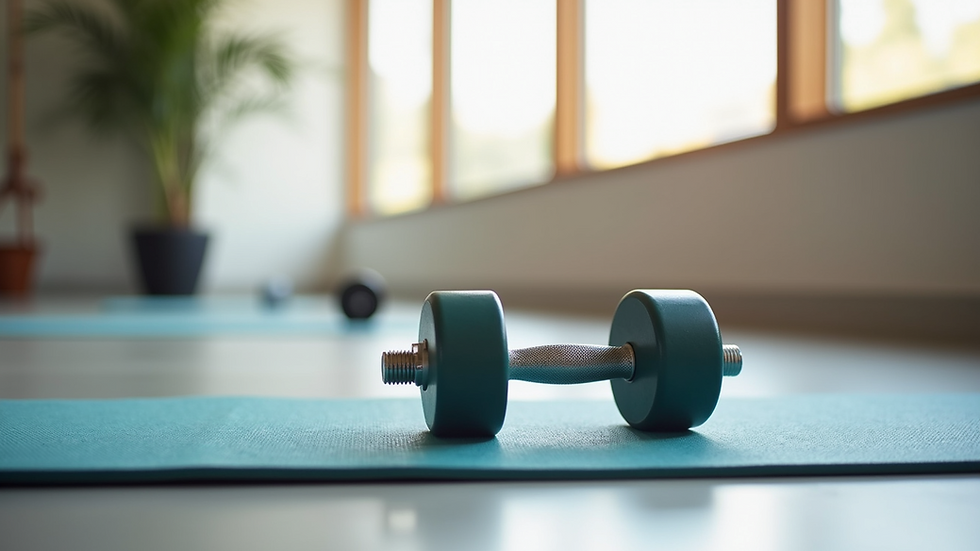Staying Active: Simple Exercises for Older Adults
- Nathaniel Laver
- Aug 5
- 4 min read
Staying active is crucial for older adults to maintain health, flexibility, reducing injury risks and independence. Regular exercise can improve mobility, strengthen muscles, enhance balance, and boost overall well-being. Fortunately, staying fit doesn't require an intense gym regimen. Simple exercises tailored for seniors can be both effective and enjoyable. In this blog post, we will explore a variety of exercises, delve into the best fitness programs, and offer practical tips to help older adults become more active.
Senior Fitness: Why Staying Active Matters
Research shows that engaging in regular physical activity can significantly enhance the quality of life for older adults. According to the World Health Organization, adults aged 65 and older should aim for at least 150 minutes of moderate-intensity aerobic activity each week. This can include brisk walking, biking, or swimming.
In addition to aerobic exercises, older adults should incorporate strength training activities at least twice a week. These can help combat muscle loss due to aging. Activities such as lifting light weights or performing bodyweight exercises can increase muscle mass and improve bone density which helps to reduce the risk of injury and osteoporosis.

Simple Exercises for Older Adults
Many exercises can easily be adapted to suit the needs of older adults. Here are some simple yet effective exercises that can enhance strength, balance, and flexibility:
1. Chair Stands
Chair stands are a great way to strengthen the legs and improve balance. To perform this exercise:
Sit at the edge of a sturdy chair with your feet flat on the ground.
Keeping your arms crossed over your chest, lean forward and push through your heels to stand up.
Slowly lower yourself back into the chair.
Aim for 10-15 repetitions.
2. Wall Push-Ups
Wall push-ups are excellent for strengthening the arms and shoulders while being gentle on the joints.
Stand at arm's length from a wall and place your palms flat against it at shoulder height.
Keep your body straight and lower yourself toward the wall by bending your elbows.
Push back to the starting position.
Perform 10-15 repetitions.
3. Seated Leg Lifts
This exercise is perfect for improving leg strength without putting stress on the joints.
Sit in a chair with your back straight and feet flat on the floor.
Extend one leg out in front of you, keeping it straight for a few seconds.
Lower it back down and switch to the other leg.
Repeat for 10-15 repetitions on each side.

4. Heel-to-Toe Walk
Improving balance is essential for preventing falls. The heel-to-toe walk can help with this.
Find a straight, unobstructed path.
Place the heel of one foot directly in front of the toes of the other foot as you walk forward.
Focus on moving in a straight line, and keep your head up.
Take 10-20 steps and then turn around.
5. Stretching Routine
Flexibility is vital for maintaining mobility. Incorporating stretching exercises can help.
Start with neck stretches by tilting your head to one side and holding for 10-15 seconds. Repeat on the other side.
Move on to shoulder rolls, moving your shoulders up, back, and down.
Finish with gentle stretches for your arms and legs.
What is a good Fitness Program for Seniors?
When considering a fitness program, it is essential to take into account personal goals, physical limitations, and interests. Programs that are suitable for seniors often focus on:
Gentle Aerobic Exercises: Activities like walking, swimming, or dancing can be both enjoyable and effective.
Strength Training: Light weights or resistance bands can help maintain and build muscle strength.
Balance Exercises: Incorporating yoga or tai chi can significantly enhance balance and flexibility, which are crucial for fall risks.
Programs that offer a variety of these activities, like those found in community centers or local gyms, are often the most beneficial. It's important to consult with a healthcare provider before starting any new exercise regimen, ensuring safety and effectiveness.

Tips for Staying Motivated
Staying active can sometimes be challenging, especially for older adults. Here are some tips to help maintain motivation:
Set Achievable Goals: Establish small, realistic goals to create a sense of accomplishment.
Find a Buddy: Exercising with a friend can make working out more enjoyable and keep you accountable.
Choose Activities You Enjoy: Pick exercises that you find fun—whether it's dancing, gardening, or walking dogs.
Track Your Progress: Keeping a record of your activities can help to visualize improvements and motivate you to continue.
Mix It Up: Vary your routine to prevent boredom. Try different classes, outdoor activities, or even new sports.
Staying Active with Safety in Mind
Safety should always be a priority. Here are some safety tips for older adults to consider while exercising:
Warm-Up and Cool Down: Always start with a warm-up and finish with a cool-down to prepare your body for exercise and aid recovery.
Stay Hydrated: Drink plenty of water before, during, and after exercising to stay hydrated.
Listen to Your Body: It’s important to pay attention to what your body is telling you. If something feels wrong, stop and rest.
Wear Proper Footwear: Supportive shoes can prevent slips and falls during exercise.
By incorporating these exercises and tips into your routine, you can build a foundation for better health and well-being. For more specialized fitness for seniors programs, consider reaching out to local fitness trainers or community organizations focusing on older adult wellness.
Embracing a Healthier Lifestyle
Staying active as a senior isn't just about physical health; it also contributes to mental and emotional well-being. Regular exercise can reduce feelings of depression and anxiety, improve mood, and enhance overall cognitive function. By adopting a positive attitude toward physical activity and engaging in simple exercises, older adults can lead healthier, happier lives.
Remember, it's never too late to start. Whether you prefer a brisk walk in the park or a gentle yoga class at home, embracing movement can become a rewarding part of daily life. Make each step count, and enjoy the benefits that staying active brings.
.jpg)



Comments